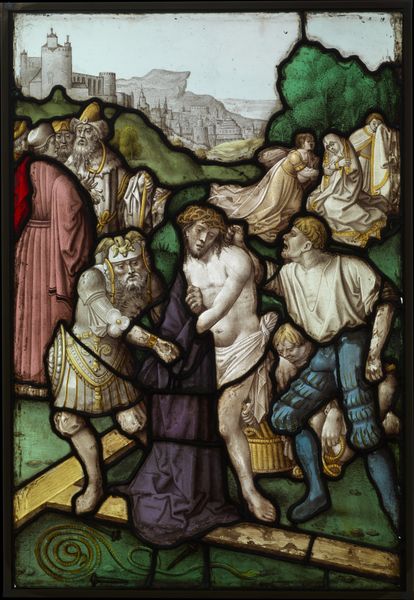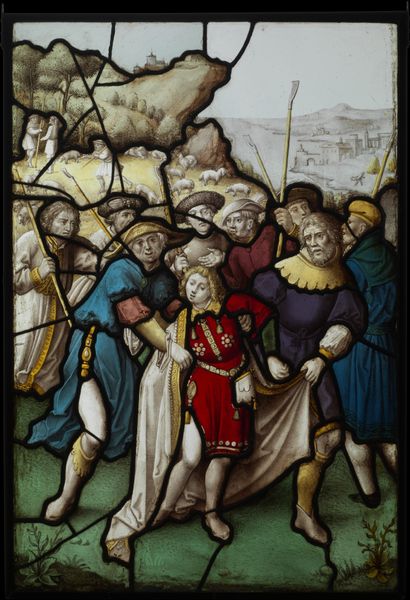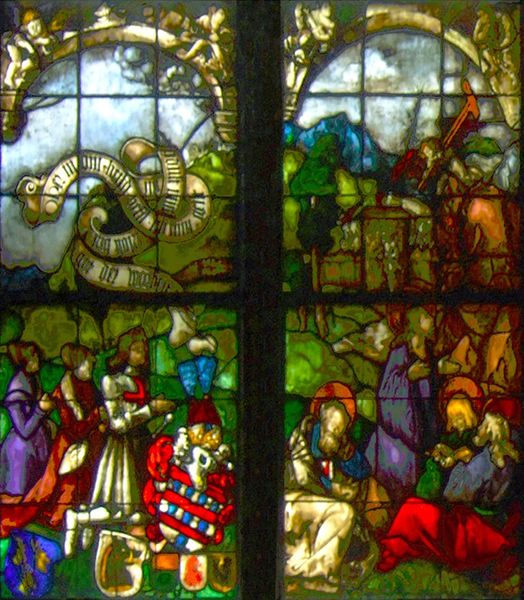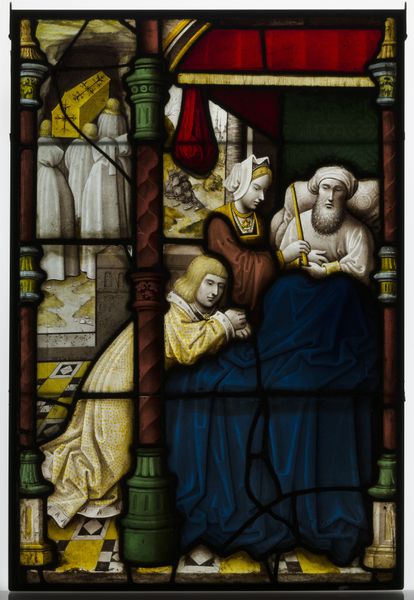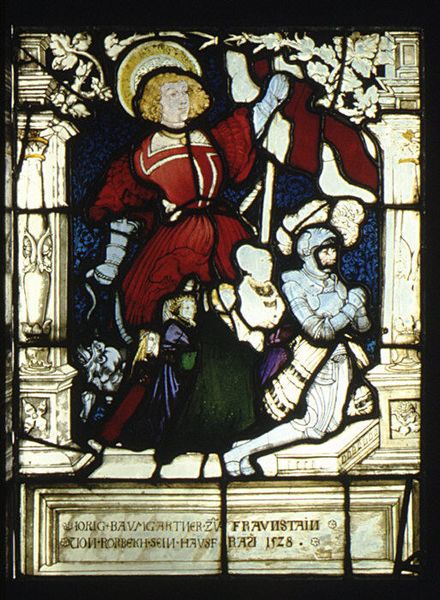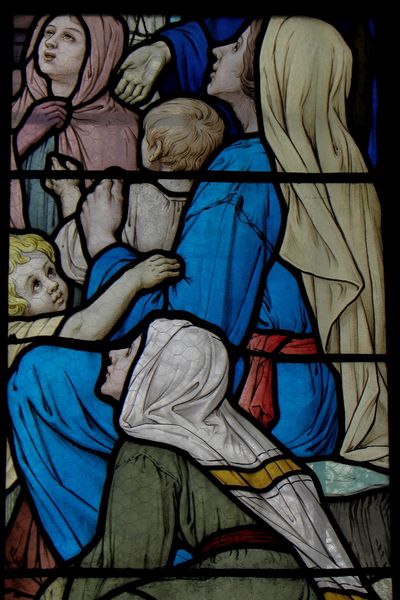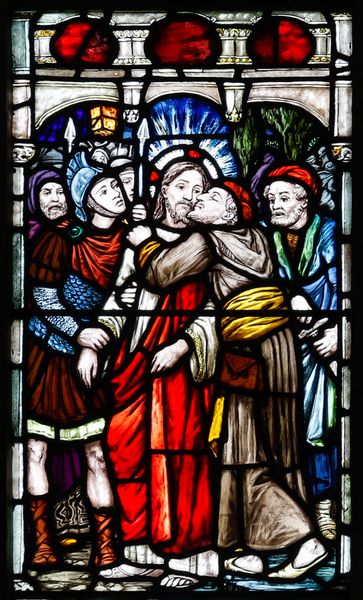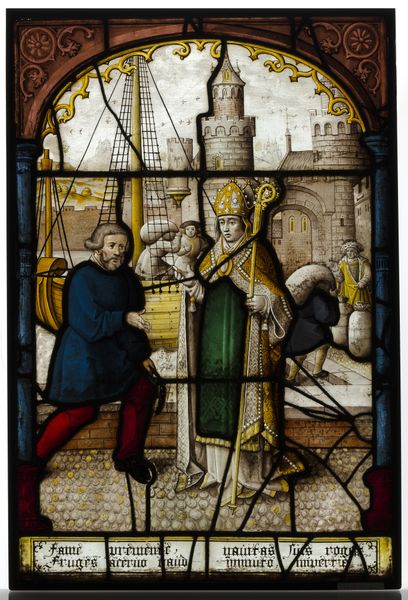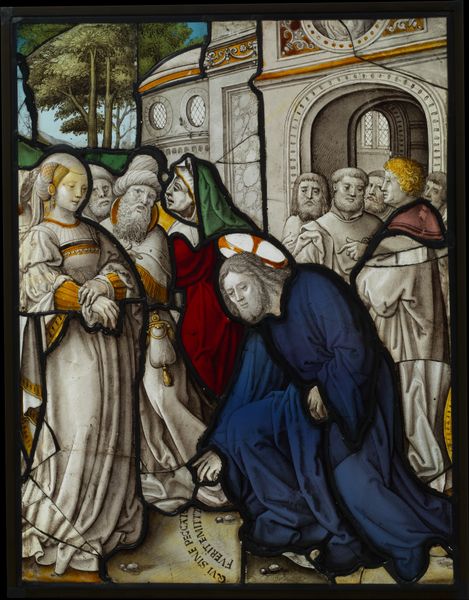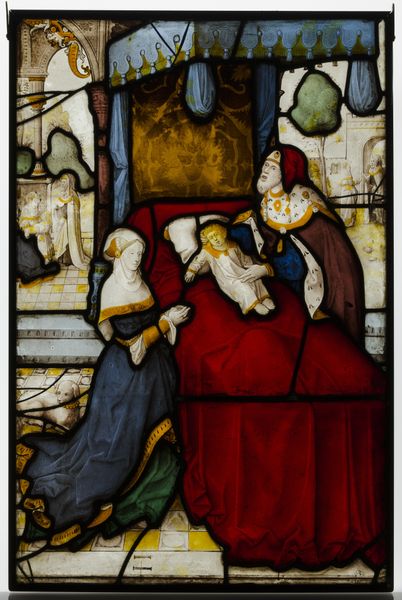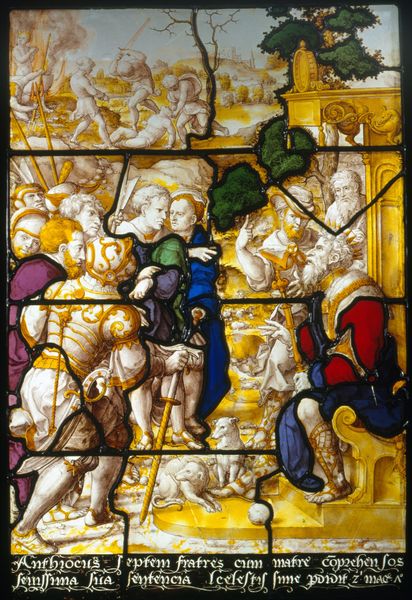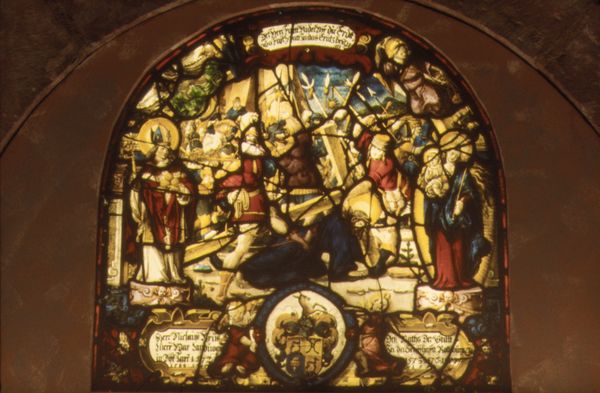
tempera, glass
#
medieval
#
narrative-art
#
tempera
#
figuration
#
11_renaissance
#
glass
#
men
#
central focal point
#
history-painting
#
northern-renaissance
#
decorative-art
Dimensions: Overall: 27 3/8 × 18 3/8 in. (69.5 × 46.7 cm)
Copyright: Public Domain
Curator: Oh, isn't this striking? Here we have a stained-glass panel crafted sometime between 1500 and 1550, by the artist Jan Rombouts. It’s entitled “King David Driven from Jerusalem,” and it lives now at the Metropolitan Museum. Editor: It does strike you, doesn’t it? First thought? Panic! That frantic red figure brandishing... what is that? It just screams "fleeing disaster!" It's funny, because you expect stained glass to be static, luminous, maybe peaceful. Curator: Exactly. Rombouts breaks that expectation. He presents a dramatic narrative scene, pulled straight from the Old Testament – Absalom’s rebellion forcing David’s hasty exit. The use of tempera on glass, not something you see every day, lends it a rich, almost painterly quality, wouldn't you agree? Editor: Absolutely. The tempera allows for such detailed storytelling. Look at David's face, the way he clasps his hands—utter dejection. But, you know, it also shows us what Royal fashion looked like then; how the visual style expressed a kind of regal language? A powerful individual being forced into undignified flight makes a poignant statement, I think, and one that would have resonated with viewers across a long swath of European history where kingdoms come and go. Curator: A brilliant point about the regal visual language. Considering that these stained-glass windows were often commissioned for churches or wealthy patrons, this image would have been a stark reminder of the precarious nature of power, even divinely sanctioned power. A political cautionary tale cast in jewel-toned glass. And who knew stained glass could possess so much urgency and anxiety! Editor: It's rather fascinating, isn't it? The emotional transparency is such a contrast to its delicate, colorful construction. It seems appropriate that religious themes found homes in stained glass during that historical era, with light flooding spaces. Curator: And the light filtering through amplifies the pathos, somehow making the narrative both ethereal and profoundly human. A lovely blend of symbolism and technique serving a powerful, historic tale.
Comments
No comments
Be the first to comment and join the conversation on the ultimate creative platform.
